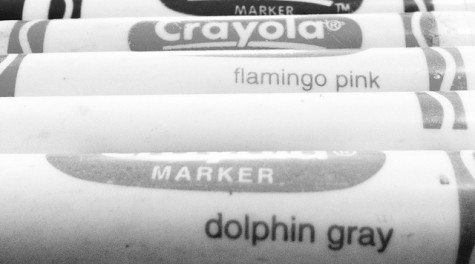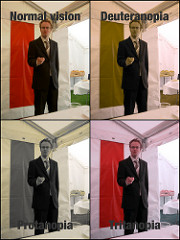 At the end of the year, the New York Times Book Review featured the Year in Poetry, covering 2015 collections by poets here and abroad, and other poetry features, including well-known people who talked about their favorite poems. The section’s Letters department always brings a range of opinions; the comments on the poetry issue followed in this vein. Some people were thrilled, others less so. But one interesting letter took issue with the cover itself, which spelled out The Year in Poetry in a series of colored dots.
At the end of the year, the New York Times Book Review featured the Year in Poetry, covering 2015 collections by poets here and abroad, and other poetry features, including well-known people who talked about their favorite poems. The section’s Letters department always brings a range of opinions; the comments on the poetry issue followed in this vein. Some people were thrilled, others less so. But one interesting letter took issue with the cover itself, which spelled out The Year in Poetry in a series of colored dots.
This letter writer couldn’t read the issue’s title. He is colorblind.
He’s not the only one who’s been baffled by the shades of current events. Colorblind NFL fans who watched a November game pitting the New York Jets against the Buffalo Bills had trouble distinguishing between the teams because of their new all red v. all green uniforms. Some viewers resorted to the radio, instead.

The most common forms of red-green colorblindness are linked to the X chromosome; eight percent of men with northern European ancestry have this condition, but only 0.5 percent of women. And because it hasn’t affected me directly, colorblindness isn’t something I’ve thought about much, not since I breezed through the tests that appeared in science museums and textbooks when I was a kid.
These tests, known as Ishihara tests after the man who published them in the early 1900s, are circles made of dots that appear differently to those with normal color vision than to those with colorblindness. In some of the pictures, those with normal color vision can pick out a number among the dots; in others, the number appears only to those who are colorblind.
I thought I was done with tests. But on a recent road trip, I was talking with my oldest son about the different ailments that both frighten and fascinate him. Then I remembered that colorblindness runs in my family, and someone like him—a boy, a European mutt—might be one of the likely people to have it. At the next rest stop, I pulled out my phone, looked up an online test, and handed it to my son.
As he started looking at the pictures, he asked me what made people colorblind. I didn’t have a good explanation for him then, but I have one now, thanks to the National Eye Institute. Our retina, at the back of the eye is made up of receptors, shaped like rods or cones, that capture light. The cones normally come in three flavors, sensitive to either red, green, or blue light. In red-green color blindness, the red or green cones don’t work well, or at all.
Researchers are working on ways to override these cones—or lack of them—in monkeys. Male squirrel monkeys all have some degree of red-green colorblindness; when researchers injected two squirrel monkeys with a genetic therapy that introduced human red photopigment genes to the monkeys’ retinas, they successfully could pick out the color red in a variety of tasks. Their enhanced color vision was still apparent two years later.
A few companies makes glasses that, for some colorblind people, reveal a fuller spectrum. If you need a pick-me-up, find a few videos of people trying the glasses on for the first time. One colorblindness expert cautions that these glasses only work in certain situations, and are not a cure. But still: Regular people having extraordinary moments in front of their kids, in their messy yards, in the middle of the garden section at a home improvement store, on the beach. I was trying to decide what to quote from one of these videos, but it’s difficult to choose. This one’s pretty good: “You got a 280-pound man to cry while having fish chew on his feet.”
Would my son need glasses like these someday? I followed along as he read off a number, thumbed the phone to the next screen, peered in at the dots. 27, 61, 9. Sometimes colorblindness does emerge later in life, but for the moment, he saw what I did.
Which is something I often take for granted. I keep watching the video of the man seeing his first sunrise, and listening to what he says: “I can’t believe you guys see this every day.”
**
Top image by Bjarke Bench via Flickr/Creative Commons
Colorblindness graphic by Simon Standgaard via Flickr/Creative Commons
Thank you for this, Cameron. My day started off pretty badly, but the joy in these videos is really wonderful. Joy always helps.
I have a form of red/green colourblindness. My world would be very alien to many. In my world the grass is orange, people are various shades of green (pale green all the way to dark forest green), and in the fall some of the trees are this wonderful purpley-blue colour. I don’t see most shades of purple actually, and violet doesn’t even exist. It is a wonderful ice-breaker for introductions.
I have to admit though, it would be nice to see colour like everyone else does even if only once, just to see what it is like.
My son has red-green colour defective vision, and I only found out that it was carried by women when he was diagnosed. I don’t recall being told that it had Northern European ancestry, but it changes how I view it, as it is most likely a link to my Latvian-born Grandfather (who died before I was born). I believe my son will also like that probable link, but even more, I wonder what he would think of the glasses, and whether they would work for him. Thanks Cameron.
As a color blind person myself, I’m very suspicious. This “colorblindness expert” the piece refers to also says ““It works in some cases and not others.” This might be seen as caution, but since he’s actually a guy who invented and is selling glasses to correct the problem, I find his use of the word “works” to be the opposite. It’s the easiest thing in the world to help the colorblind distinguish between red and green: just give them a pair of red-tinted glasses, which immediately make green objects look much darker than red ones.
Allowing them to see in true color, however is a whole different proposition. In the linked NY Times story, First of all, how would you even know without getting inside their brains and seeing through their eyes? The linked Times story quotes one user as saying. “The blue sky is deeper than I’ve ever seen. It reminds me of Colorado. And the pine trees, they’re just so green.” How does he know? They may look different to him somehow, but how does he know he’s seeing green normally? The fact that “Tears stream down his cheeks and into his gray beard” is very poignant, but doesn’t prove anything at all except that he’s moved by the experience. Which is lovely, but says nothing about whether he’s seeing color.
The fact that someone’s making a claim doesn’t mean the claim is true, no matter how many tears are streaming down how many cheeks. It’s wonderful that people are happy, and for them, it doesn’t really matter whether the experience is what they think it is.
As a color blind science writer, however, I’d love to see some actual evidence.
Thanks, all, for reading.
Mike, I was thinking the researcher who really was skeptical of these was Jay Neitz, who is working on gene therapy. You’re bringing up a lot of important points (and I’m hoping this is a topic that you tackle, with your combined expertise!)
Gail, I’m so sorry. Thinking of you all.